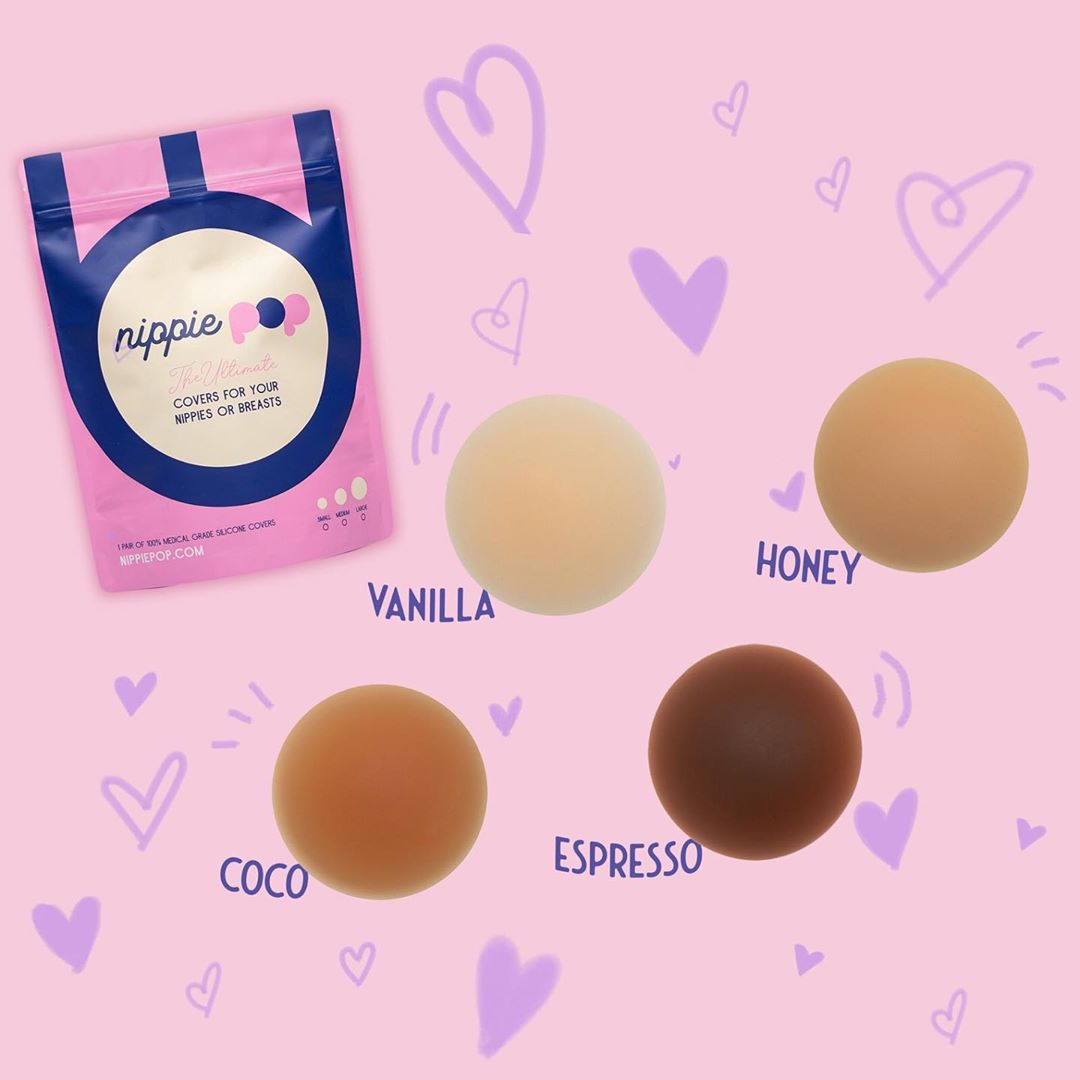Yes, many nipple covers are reusable. Proper care and cleaning can extend their lifespan.
Nipple covers provide discreet coverage and comfort under various outfits. Available in different materials like silicone, fabric, and adhesive, they are versatile and easy to use. Reusable nipple covers are cost-effective and environmentally friendly compared to single-use options. Cleaning them gently with mild soap and water ensures they remain sticky and effective.
They are perfect for backless dresses, sheer tops, or any outfit requiring a smooth look. When choosing nipple covers, consider your skin sensitivity and the occasion. Investing in high-quality reusable nipple covers can save you money and reduce waste. Always check the manufacturer’s instructions for best care practices.
Types Of Nipple Covers
There are various types of nipple covers available. Each type serves different needs and preferences. Let’s explore the most common ones.
Silicone Covers
Silicone nipple covers are very popular. They are soft, smooth, and feel like skin. These covers are water-resistant and often reusable. They stick well to the skin and provide a natural look.
Fabric Covers
Fabric nipple covers are usually made from cloth. They are breathable and comfortable. Fabric covers are great for everyday use. Some have adhesive backing, while others are non-adhesive.
Disposable Vs Reusable
Nipple covers can be either disposable or reusable. Each has its benefits.
| Type | Benefits |
|---|---|
| Disposable |
|
| Reusable |
|

Credit: www.beingbridget.com
Factors Affecting Reusability
Can nipple covers be reused? This question often arises among users. The answer depends on several factors. These include material quality, frequency of use, and care and maintenance. Understanding these factors can help maximize the lifespan of your nipple covers.
Material Quality
The material quality of nipple covers plays a critical role. High-quality silicone or fabric nipple covers are more durable. These materials can withstand multiple uses. Cheaper materials may not last as long. They can lose their adhesive properties quickly. Investing in good quality ensures longer usability.
| Material | Durability |
|---|---|
| Silicone | High |
| Fabric | Medium |
| Cheap Adhesive | Low |
Frequency Of Use
How often you use nipple covers affects their lifespan. Frequent use can wear them out faster. If used daily, they may need replacement sooner. Occasional use can extend their life. Rotate multiple pairs to increase durability.
- Daily use: Shorter lifespan
- Occasional use: Longer lifespan
- Rotating pairs: Maximizes durability
Care And Maintenance
Proper care and maintenance are crucial. Clean them after each use. Use mild soap and water for cleaning. Avoid harsh chemicals. Let them air dry. Store them in a cool, dry place. This prevents damage and maintains adhesive strength.
- Clean with mild soap and water
- Air dry after cleaning
- Store in a cool, dry place
Proper Cleaning Techniques
Keeping your nipple covers clean ensures they last longer and stay sticky. Proper cleaning also prevents skin irritation and maintains hygiene. Follow these simple steps to clean your nipple covers effectively.
Hand Washing Tips
Hand washing your nipple covers is the best cleaning method. Fill a bowl with lukewarm water. Avoid using hot water as it can damage the adhesive. Add a small amount of mild soap. Gently rub the nipple covers with your fingers. Focus on removing any residue or dirt. Rinse thoroughly with clean water. Make sure all soap is removed to prevent irritation.
Safe Detergents
Choose a mild detergent for cleaning. Harsh chemicals can damage the adhesive. Look for products labeled as gentle or hypoallergenic. Avoid using bleach or fabric softeners. These can cause wear and tear. Baby shampoo or gentle hand soap works well. Always test a small area first to ensure compatibility.
Drying Methods
Proper drying ensures the adhesive remains effective. Shake off excess water after washing. Place the nipple covers on a clean towel with the adhesive side up. Avoid direct sunlight as it can degrade the adhesive. Let them air dry naturally. Do not use a hair dryer or any heat source. Heat can damage the adhesive and reduce stickiness.
Storage Solutions
Proper storage of nipple covers ensures they remain clean and sticky. Good storage also extends their lifespan, making them reusable. Let’s explore some effective storage solutions.
Original Packaging
Most nipple covers come in a reusable plastic case. This case is designed to keep them safe from dust and moisture. Always place the nipple covers back in the original packaging after use. This packaging helps maintain their shape and stickiness. It also prevents them from getting lost or damaged.
Alternative Containers
Don’t have the original packaging? No worries. You can use small containers or ziplock bags. These alternatives can also keep the nipple covers clean and sticky.
- Small Containers: Use a small plastic container with a lid. Ensure it is clean and dry before placing the nipple covers inside.
- Ziplock Bags: A ziplock bag can also do the trick. Make sure it is sealed properly to avoid any dust or moisture.
- Jewelry Boxes: These can be a stylish alternative. They often have compartments, which can help in organizing multiple pairs.
Storing nipple covers properly ensures they last longer. Proper storage keeps them ready for the next use.
Signs You Need A New Pair
Reusable nipple covers are convenient and cost-effective. But they wear out over time. Here are three main signs that you need a new pair.
Loss Of Adhesion
Nipple covers should stick well to your skin. If they start slipping, they have lost their stickiness. This is a clear sign that you need a new pair. Adhesion loss means they won’t stay in place, causing discomfort.
Visible Damage
Check your nipple covers for any visible damage. Tears, holes, or frayed edges are signs of wear and tear. Damaged covers can’t provide the same level of protection. Replace them to maintain comfort and effectiveness.
Skin Reactions
Your skin should not react to nipple covers. If you notice redness, itching, or irritation, it’s time for a change. Skin reactions can indicate that the material has degraded. Ensure your skin stays healthy by using fresh nipple covers.
| Signs | Description |
|---|---|
| Loss of Adhesion | Nipple covers no longer stick well to the skin. |
| Visible Damage | Presence of tears, holes, or frayed edges. |
| Skin Reactions | Redness, itching, or irritation on the skin. |

Credit: www.cosmo.ph
Extending The Life Of Nipple Covers
Nipple covers can be reused many times with good care. Follow simple steps to make them last longer. Keep them clean and in good shape.
Proper Application
Apply nipple covers to clean, dry skin. Press firmly for a secure fit. Make sure there are no wrinkles or air bubbles.
| Steps | Details |
|---|---|
| 1. Clean Skin | Use mild soap and water. |
| 2. Dry Thoroughly | Ensure no moisture remains. |
| 3. Apply Evenly | Smooth out any wrinkles. |
Avoiding Lotions And Oils
Lotions and oils can weaken the adhesive. Avoid using them on your skin before applying nipple covers. These substances can cause the covers to slip off.
Regular Maintenance
After each use, rinse the covers with mild soap and water. Let them air dry with the adhesive side up. Store them in their original packaging to keep them dust-free.
- Rinse: Use mild soap.
- Dry: Air dry adhesive side up.
- Store: Use original packaging.
Eco-friendly Considerations
Many people ask, “Can nipple covers be reused?” The answer is yes. Reusing nipple covers can help the environment. It reduces waste and saves resources. Let’s explore some eco-friendly options.
Biodegradable Options
Biodegradable nipple covers are a great choice. They break down naturally. This process helps reduce landfill waste. Many are made from natural materials. These materials include bamboo and cotton.
Here is a quick comparison:
| Material | Biodegradable | Natural |
|---|---|---|
| Bamboo | Yes | Yes |
| Cotton | Yes | Yes |
| Silicone | No | No |
Recycling Old Covers
Recycling old nipple covers is another option. Some brands offer recycling programs. You can mail back old covers. They will recycle them properly. This prevents them from ending up in landfills.
Steps to recycle:
- Check if the brand has a recycling program.
- Clean the nipple covers before sending.
- Follow the brand’s mailing instructions.
Recycling helps the planet. It keeps waste out of landfills. Always opt for recycling programs if available.

Credit: www.getboomba.com
Frequently Asked Questions
Can You Wash And Reuse Nipple Covers?
Yes, you can wash and reuse nipple covers. Gently hand wash with mild soap and water. Let them air dry.
How Many Times Can You Use Nipple Covers?
You can use nipple covers multiple times, typically up to 25 uses, depending on the brand and care.
Can You Rewear Nipple Covers?
Yes, you can rewear nipple covers if they are reusable. Clean them properly after each use to maintain adhesion.
Can You Reuse Disposable Nipple Covers?
No, you cannot reuse disposable nipple covers. They are designed for one-time use only for hygiene and adhesive reasons.
Conclusion
Nipple covers can be reused if properly cared for. Clean them gently and store in a cool place. This extends their lifespan and ensures they remain effective. With proper maintenance, you save money and reduce waste. Make the most of your nipple covers by following these simple care tips.
